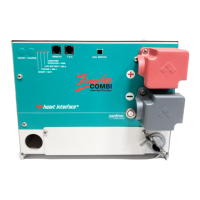9
Battery Discharge/Charge Cycling
Deep-cycle batteries can be discharged about 80% of capacity
before damage occurs. Shallow cycling will result in a longer
battery life. A 50% discharge cycle is generally considered to
be a good compromise between long battery life and battery
bank size. To achieve 50% cycling, you should calculate your
amp-hour consumption between charging cycles and use a
battery bank with twice that capacity.
Calculating Your Amp-Hour Usage Between
Battery Recharges
1. Find the amp-hour usage for each AC appliance or tool
that will draw its power from the inverter by:
• Figuring out how long you plan on using each appli-
ance between battery recharges.
• Finding the appliance in the “Typical Power Consump-
tion” chart, on page 10.
• Reading across the row, until you find the amp-hour
usage in the appropriate column.
2. If your AC appliance or tool is not listed in the “Typical
Power Consumption” chart, calculate its power usage by:
• Looking for the rating plate on the appliance or tool. It
will be rated in AC Amps, Watts, or AC VA (Volt-
Amps) apparent power.
• Using one of the formulas in the “Amp-Hour Con-
sumption Formulas” chart to calculate the DC amp-
hour draw on a 12-volt system.
3. Add up the amp-hour usage figures for all the appliances
or tools. This gives you the total amp-hour load require-
ment.
4. Your battery bank should be a minimum of 2 times larger
than the total amp-hour load requirement. You should
plan on recharging your batteries when they are 50%
discharged.

